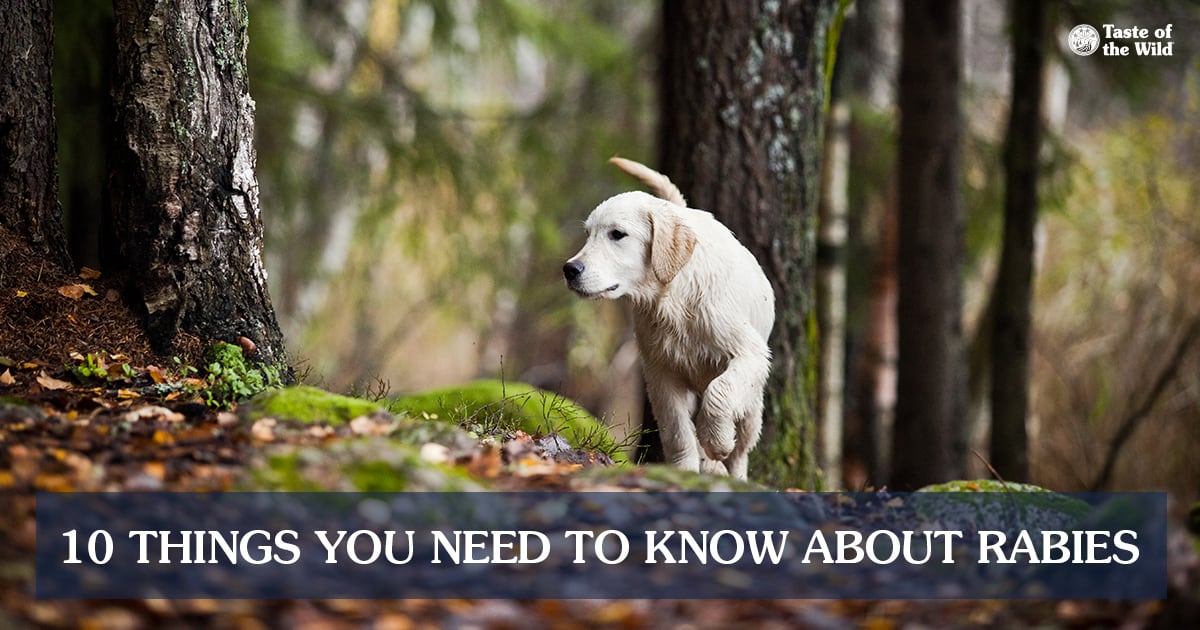
For dogs and cats, infection with the rabies virus is inevitably fatal. But the good news is, it’s entirely preventable with regular rabies vaccinations. Protecting your pet’s health is an important way to safeguard your family, since infected animals can spread the virus to people, too. As part of World Rabies Day on September 28, we’re offering 10 things you should know to help keep all your loved ones safe.
-
The rabies virus is transmitted by exposure to the saliva of an infected animal. This usually occurs through a bite, although, less commonly, saliva can enter a scratch or open wound. Most pets that fall victim to rabies are unvaccinated and are infected by wild animals like bats, raccoons, skunks or foxes. That’s why you shouldn’t allow your pet to chase or fight wildlife.
According to the Centers for Disease Control and Prevention (CDC), about 60 to 70 dogs and more than 250 cats in the U.S. die of rabies each year. Thanks to pet vaccinations, human deaths in the U.S. are relatively low, averaging about two people per year. The same can’t be said for rabies infections worldwide: Approximately 59,000 human deaths occur each year, in many cases from the bite of a rabid dog.
- Rabies occurs in 49 states, with Hawaii being the exception. The disease is especially prevalent on the East Coast from Maine to Florida and along the Mexican border.
- There’s no cure for rabies in pets. Once animals show signs of disease, they typically die in less than 10 days. And there’s no way to diagnose the disease in a live animal — it can only be done by examining brain tissue after an animal passes away.
- Animals can only transmit the virus after they show signs of disease. In the early stages, infected dogs and cats may appear nervous, aggressive or more friendly than normal. In time, they can become overly sensitive to light and sound. They may have seizures and lash out at others. Finally, they may drool excessively and experience a paralysis that first affects the head and neck before moving down the body, eventually paralyzing the muscles of the chest so they’re no longer able to breathe.
- Most states have laws that require rabies vaccinations for pets. Check with your veterinarian and know the state and local ordinances to make sure your pet’s rabies vaccination always stays current.
- Unvaccinated pets that bite a human or another pet usually require a 10-day quarantine. Infected animals can’t transmit the virus until they’re showing signs, and they usually die within 10 days after that. If the animal survives the 10 days, it means it wasn’t shedding the virus at the time of the bite.
-
If your pet is bitten by a wild animal or another pet, contact your veterinarian immediately. Ask the owner of the other pet for proof of rabies vaccination. If they don’t have it or it was a wild animal, contact animal control to determine appropriate action. If your pet’s rabies vaccination is current, your veterinarian may recommend a booster vaccine.
If your pet’s rabies vaccine has expired, the state may require a 6-month quarantine in an approved animal care center. Because the incubation period, or the time between the bite and the start of signs, is typically less than six months, this allows time to observe the pet and make sure it doesn’t show signs of infection before it is exposed to other pets and humans.
- Contact your veterinarian if your pet bites another pet or a person. You will need to provide proof of a rabies vaccination. As rabies laws vary regionally, your veterinarian can advise you as to what steps need to be taken in your state.
- Teach children to be gentle and respectful when handling pets. This helps reduce the risk of animal bites. Children should also ask the owner permission before petting other dogs or cats, for the same reason.
- If you or someone you are with is bitten by a potentially rabid animal, wash the wound with soap and water and call a physician or emergency room immediately. The doctor will treat the wound and decide if post-exposure prophylaxis, or an injection of plasma followed by a series of rabies vaccinations is needed.
By keeping your pet’s rabies vaccination current, limiting your pet’s exposure to wildlife and teaching children how to handle pets appropriately, you can minimize the risk of rabies infection for everyone in your household.
The information in this blog has been developed with our veterinarian and is designed to help educate pet parents. If you have questions or concerns about your pet's health or nutrition, please talk with your veterinarian.
